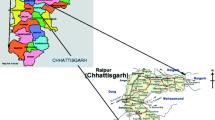Summary
Most of the stochastic prediction methods are developed for stationary time series. However, many climatic series show clear evidence of non-stationarity. In such cases, methods based on the stationarity assumptions would be inappropriate. Alternative methods such as those based on stochastic approximation are preferable in these cases because they are based on adaptive learning principles. These methods have not been applied and their suitability not tested with nonstationary climatic time series.
In the stochastic approximation method, the deterministic component of a nonstationary time series is estimated by first predicting the two steps ahead value of a time series. The two steps-ahead forecast may involve a term characterizing the trend in the time series. The two steps-ahead predictor is corrected to obtain the one step ahead prediction by using a gain sequence.
The dynamic stochastic approximation method is used herein to predict non-stationary climatic time series. Daily minimum temperature series at West Lafayette, Indiana, U.S.A. and seasonal temperature and precipitation series at Evansville, Indiana, U.S.A. are used in the study. For data trends, an improved dynamic stochastic approximation method, called the modified dynamic stochastic approximation method gives more accurate predictions. If the method is used for seasonal data, then it can be used to track the time varying mean value.
Similar content being viewed by others
References
Box, G. E. P., Jenkins, G. M., 1970:Time Series Analysis — Forecasting and Control. San Francisco: Holden Day, 553 pp.
Chien, Y. T., Fu, K. S., 1969: Stochastic learning of time varying parameters in random environment.IEEE Trans. System Science Cybernetics 5, 237–246.
Dupac, V., 1965: A dynamic stochastic approximation method.Ann. Math. Stat. 36, 1695–1702.
Hsieh, C. H., Rao, A. R., 1987: On the definitions of Temperature and Precipitation Normals. Tech. Rept. CEHSE-87-04, School of Civil Engineering, Purdue University, W. Lafayette, USA, 39 pp.
Kesten, H., 1958: Accelerated stochastic approximation.Ann. Math. Stat. 29, 41–59.
Kalman, R. E., 1960: A new approach of linear filtering and prediction problems. ASME,J. Basic Eng. 82, 35–45.
Kashyap, R. L., Rao, A. R., 1976:Dynamic Stochastic Models from Empirical Data. New York: Academic Press, 334 pp.
Priestley, M. B., 1982:Spectral Analysis and Time Series, Vol. I and II. London: Academic Press, 992 pp.
Author information
Authors and Affiliations
Additional information
With 6 Figures
Rights and permissions
About this article
Cite this article
Rao, A.R., Hsieh, C.H. & Jeong, G.D. Prediction of nonstationary climatic series. Theor Appl Climatol 46, 75–87 (1992). https://doi.org/10.1007/BF00866087
Received:
Revised:
Issue Date:
DOI: https://doi.org/10.1007/BF00866087




